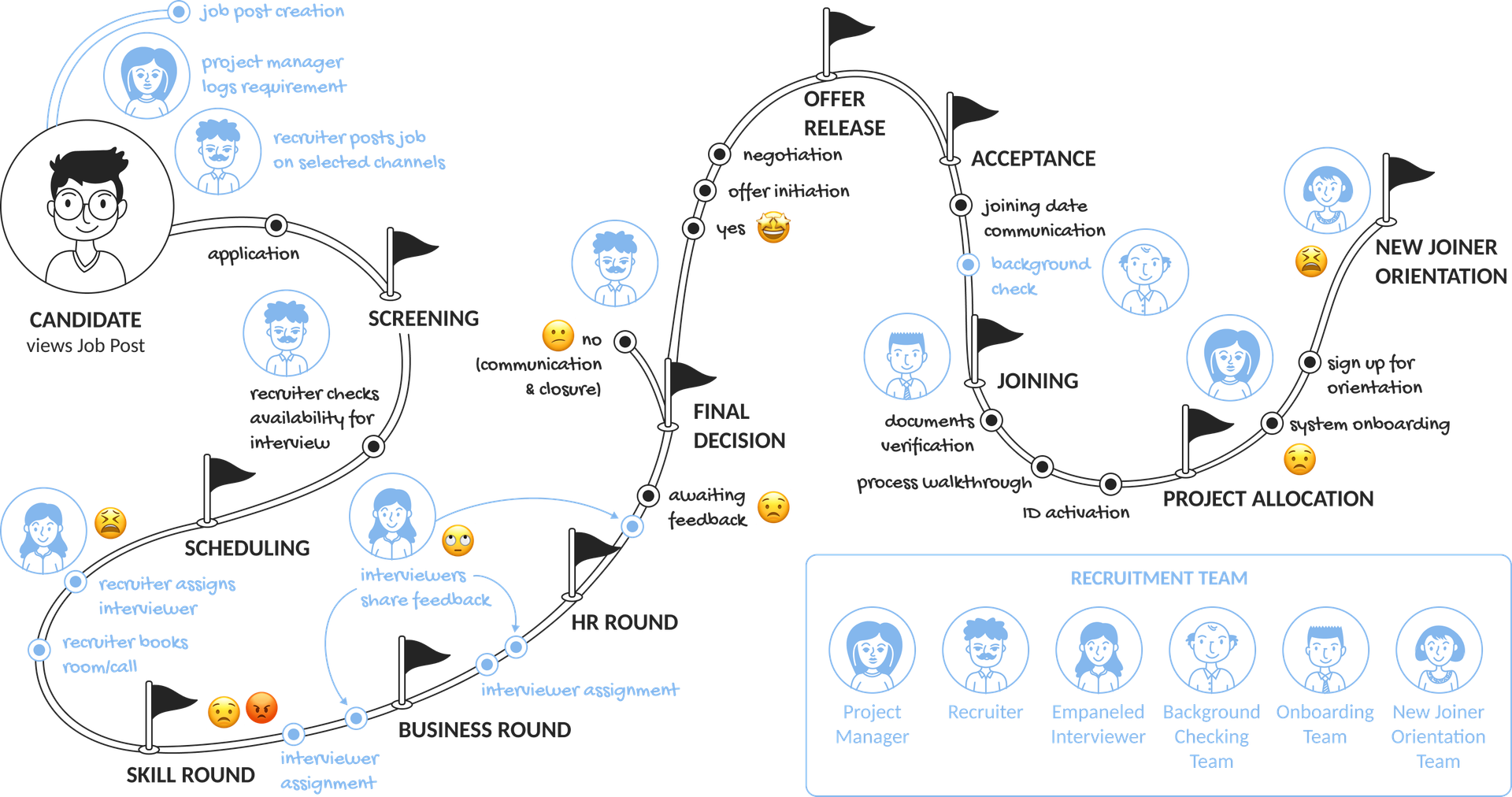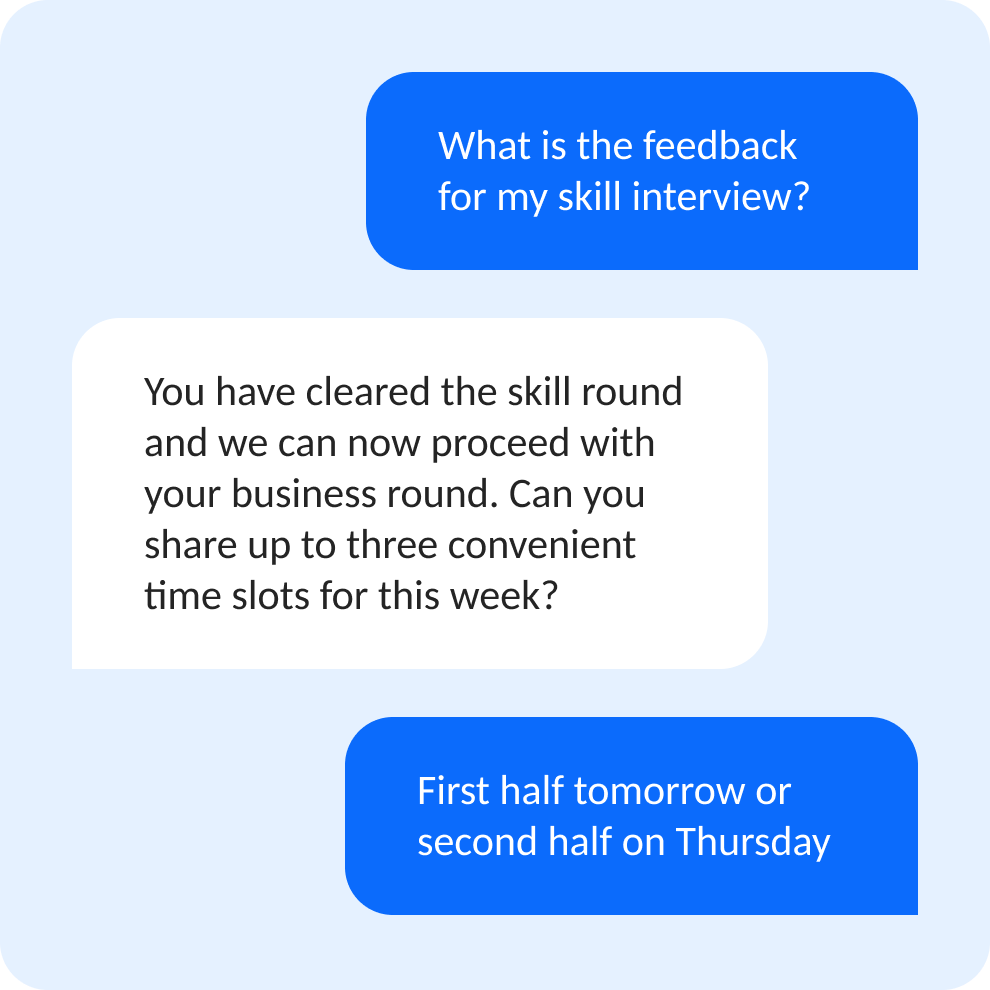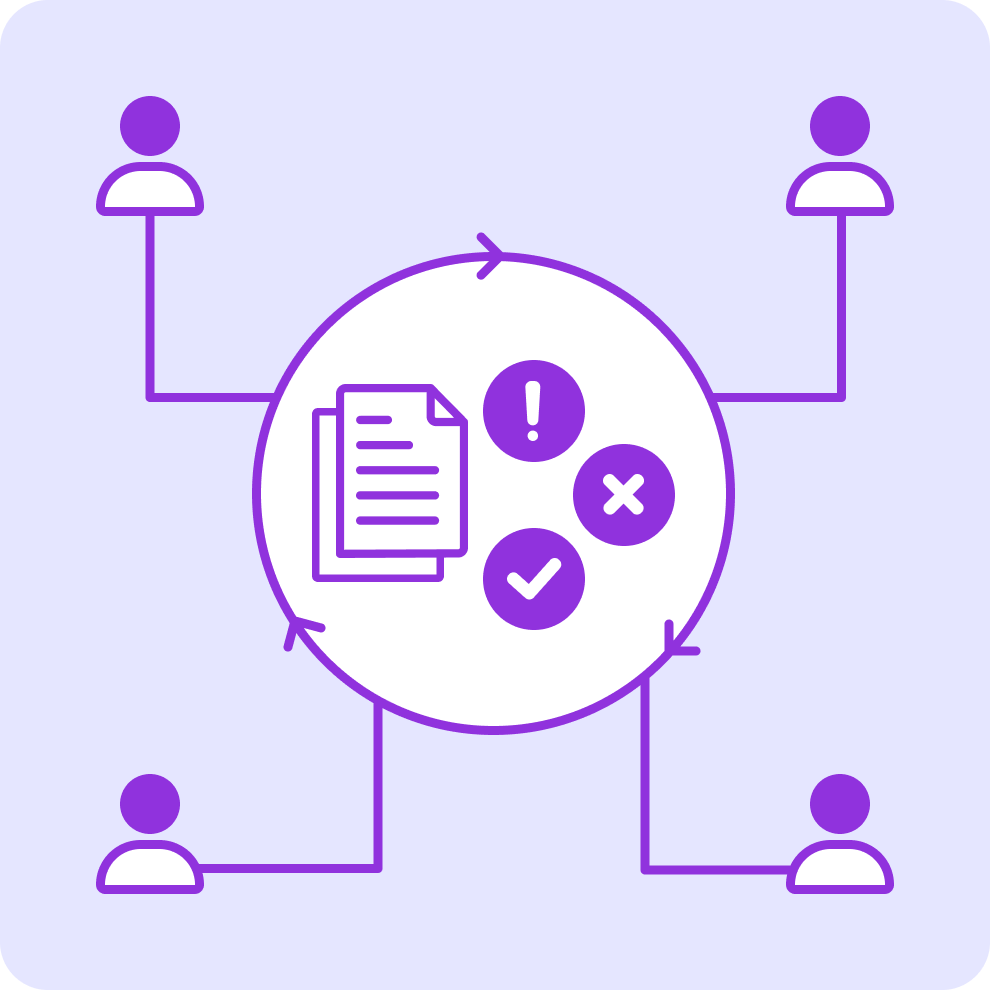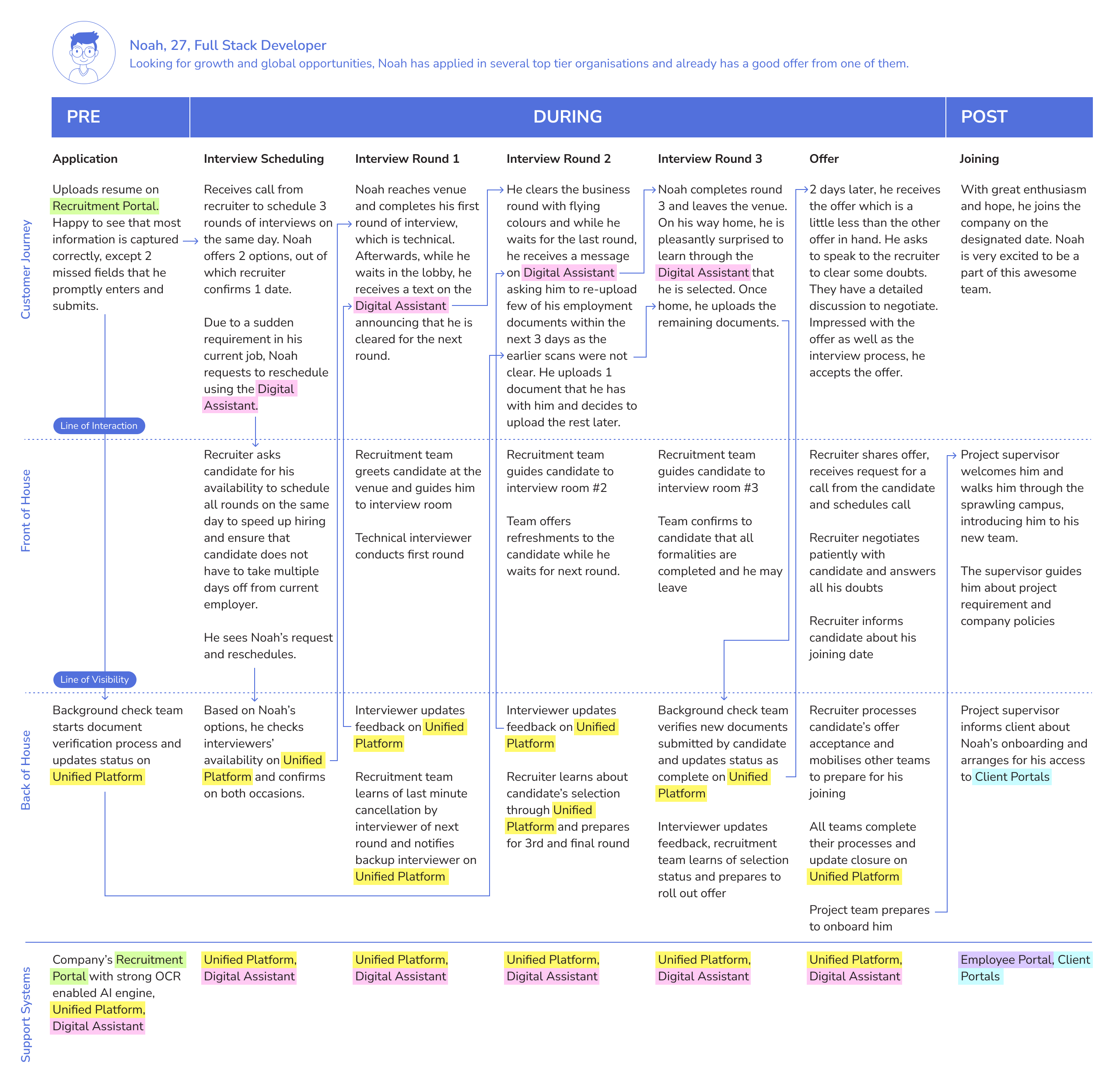I led research and service design to enhance the candidate’s experience during recruitment. With a team of four service designers, I facilitated research across different stakeholder groups, followed by co-innovation workshops and a service design blueprint.

Hiring top talent quickly was crucial for a large services-based MNC. Every month, thousands of candidates were interviewed, and hundreds were hired. The recruitment process, modelled as a supply chain, involved multiple teams working in silos. This led to long, frustrating delays for candidates, with many giving up to join rival organisations. Meanwhile, recruiters and interviewers, stretched thin, were doing their best to keep up.
*Best viewed on a large screen

Fig. 1: An illustration of the candidate's journey from application to onboarding, highlighting the various roles within the recruitment team that support the process.
80
+
Participants
Interviews & Focus Group Discussions
3
Stakeholder Groups
Candidates, Recruiters, Interviewers
5
Indian Cities
Bengaluru, Chennai, Hyderabad, Mumbai & Pune
Candidates
Eager for a promising role at a renowned MNC, they admired the company’s polished interactions, which raised their expectations. But last-minute interview cancellations, and delays in feedback left them disappointed. To make matters worse, the absence of a single point of contact left them with no clear way to seek updates.
Interviewers
Busy with ongoing projects, interviewers were reluctant to take on interviews, especially when assigned without considering their availability. Skill mismatches, discovered last-minute due to missing resumes, added to their frustration. Many found the feedback forms long and tedious, thus delaying dependent processes.
Recruiters
Under pressure from projects to meet recruitment targets, recruiters worked hard to find candidates and schedule interviews. However, frequent no-shows from both candidates and interviewers disrupted their efforts. Last-minute offer rejections by candidates only added to their challenges.
Lack of integration between various teams was the primary reason for delays across the journey. Lack of real-time status updates led to delays in action, further leading to confusion and chaos.
Having identified experience gaps in the candidate journey, we focused on moments with potential to pivot the experience. Potential solutions combined high-impact, unique experiences with essential operational fixes. But one thing stood out. Delivering a great candidate experience required addressing the interconnected journeys of other personas as well.

On demand status updates
To keep candidates informed about their status and next steps, we recommended a virtual assistant. While a real person would have been ideal, assigning SPOCs for so many candidates wasn’t feasible.
Why it matters
It could make long waits more bearable and prevent candidates from dropping out due to confusion or lack of communication.

One, unified platform
A central hub to track the recruitment journey across teams was the missing link in the supply chain. We aimed to address this with a unified portal that integrated inputs, kept everyone informed of their roles, and highlighted TATs.
Why it matters
It would reduce chaos by ensuring interviewers had resumes in advance, recruiters could assign backups if needed, and no-shows would drop significantly.

Rewards & Recognition
While an R&R system existed, we recommended a more structured, gamified system to track contributions and offer meaningful recognition.
Why it matters
Interviewers are key to an efficient recruitment process, but frequent no-shows caused delays and frustrated candidates. Keeping them motivated was essential to address this issue.
As the final step, we developed a Service Design Blueprint to map the proposed candidate experience. The existing journey was fragmented, with communication gaps between stakeholders and teams. Our blueprint mapped Front of House and Back of House actions, clearly defining team responsibilities at each stage. Interaction lines illustrated the flow of information between stakeholders and systems.
*Best viewed on a large screen
